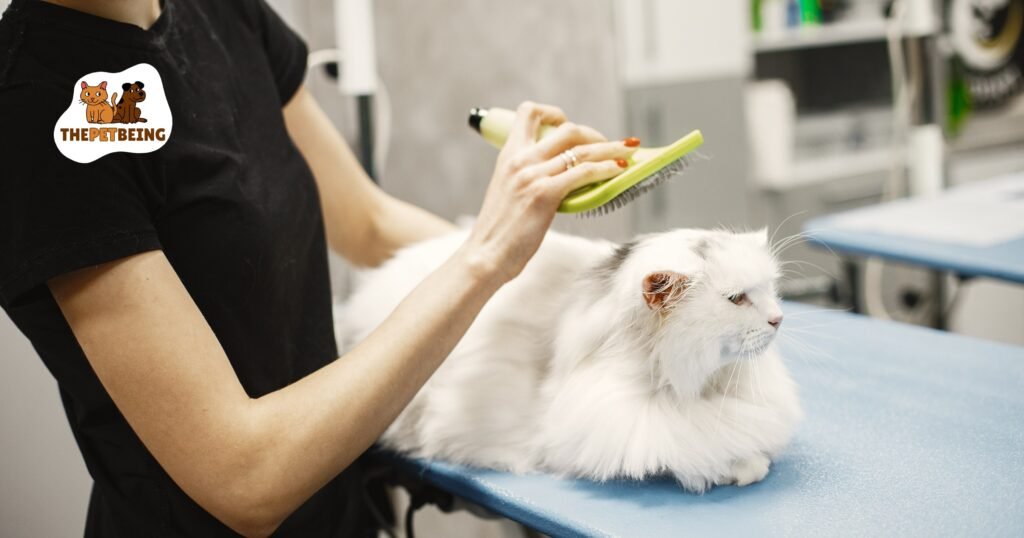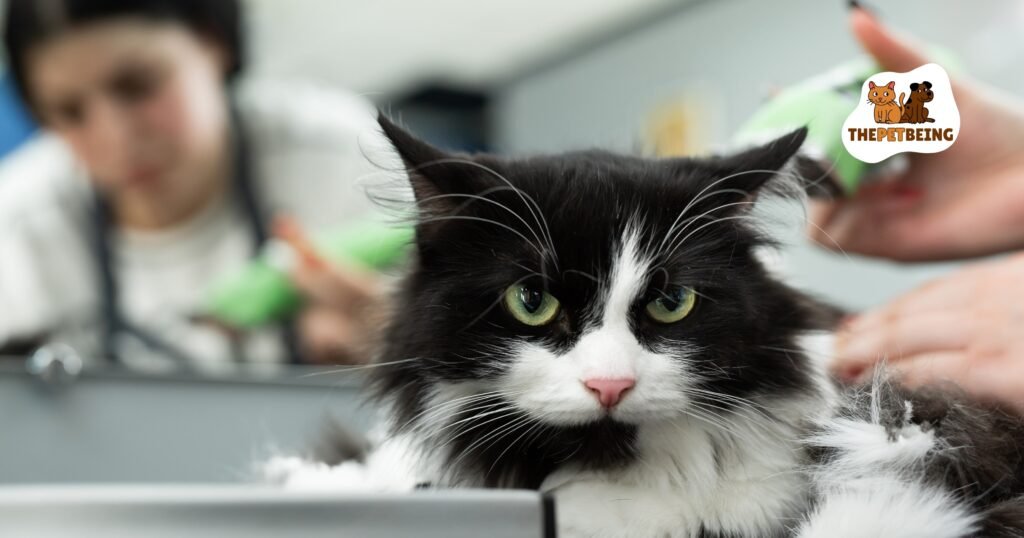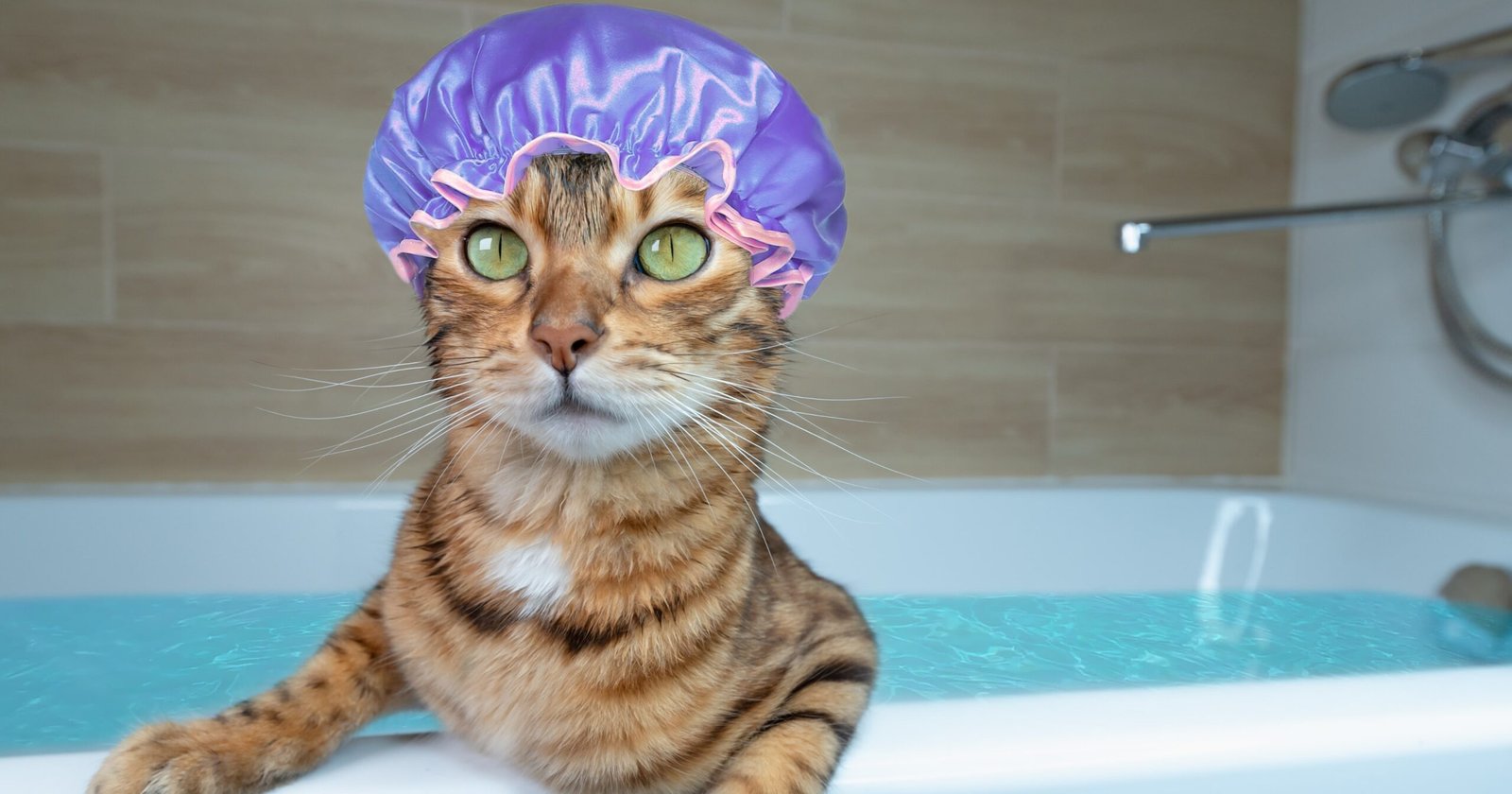How To Care For A Cat With Cerebellar Hypoplasia? Cats with cerebellar hypoplasia must always be kept indoors to ensure their well-being. Declawing is not advisable, as they rely on all their claws to maintain balance. Keeping their nails slightly longer than the usual cat’s length is recommended, providing better traction as they move around the house.
Cats are cute, cuddly, and fun. They add joy to our lives with their goofy personalities and sweet embraces. While there are certainly times when we want to relax without being pestered by our feline friend, caring for a cat is always an immense pleasure. But a kitty with Cerebellar Hypoplasia (CH) can require special attention and consideration to ensure it stays healthy and comfortable.
In this blog post, we’ll discuss what CH exactly is, how it impacts cats daily, and provide easy tips on how to best care for your cat with this condition. Let’s get started! Caring for a cat with cerebellar hypoplasia can be challenging but extremely rewarding. This condition causes coordination and balance issues in cats, which require extra attention when providing care.
Understanding Cerebellar Hypoplasia
Cerebellar Hypoplasia (CH) is a condition that affects a cat’s brain. It happens when the cerebellum part of the brain does not grow correctly before birth.
The cerebellum is the part of the brain that helps control how the body moves. So, a cat with CH might move wobbly or unsteady.
This condition happens before a kitten is born and does not worsen over time.
It can occur if the mother cat gets an infection when she is pregnant or if something harms the kittens while they are still in her belly.
But even though a cat with CH might not move like other cats, they can still live a happy and healthy life.
Cats with CH do not feel pain because of their condition and do not know they are different from other cats.
They can eat, play, and do everything other cats do; they do it uniquely.
These cats can make excellent pets and deserve the chance to be loved and cared for like any other cat.
It is important to remember that while caring for a cat with CH might require some extra work, the love and joy they bring to our lives make it all worth it.

10 Tips for Caring for a Cat with Cerebellar Hypoplasia
How Do You Care for a Cat With Cerebellar Hypoplasia? Caring for a cat with Cerebellar Hypoplasia (CH) can be a unique challenge, but with the right knowledge and approach, you can help your feline friend to lead a fulfilling and comfortable life. Here are ten tips to help you along the way:
Understand the Condition
Before you can effectively cater to your cat’s needs, it’s essential to have a comprehensive understanding of CH.
This condition, present from birth, does not cause any pain or discomfort to your cat, nor does it worsen over time.
Your cat is likely oblivious to their condition, but understanding their unique challenges will allow you to provide the best care possible.
Create a Safe Environment
A safe environment is critical for a cat with CH. You can make their surroundings safe by padding sharp corners and hard surfaces.
This helps to prevent injury if they lose their balance or fall. Keeping their food and water bowls in an easily accessible, non-slippery place is also essential.
Rugs and carpets can provide additional grip for your cat, reducing their chances of slipping.
It’s also a good idea to keep their litter box where they can quickly get in and out.
Your furry friend will appreciate these simple, thoughtful changes to their environment.

Easy Access to Essentials
Cats with CH need their important stuff within easy reach.
Place their food, water, and litter box where they usually hang out.
Lower down the items if they struggle to jump or climb.
Always keep pathways clear to avoid trips or stumbles.
A cozy, low-set bed in a quiet spot will give them a comfortable resting place.
Remember, easy access to their essentials helps them feel confident and safe.
Simple changes can enhance their quality of life considerably.
Opt for Shallow Litter Boxes
Choosing the correct litter box can make a huge difference. Cats with CH can find it hard to climb into high-sided boxes.
That’s why a shallow litter box is best. This box type is easy for them to get in and out of. Make sure the box is big enough for them to move around in.
Also, please place it in a quiet, easy-to-reach spot. This will make bathroom time less of a stress for your special kitty.
Remember, small steps make a big difference in their life.
Keep Them Active
Physical activity is crucial for all cats, even those with CH. Playtime keeps them healthy, happy, and sharp. Use toys that are easy for your cat to interact with.
Try items that move slowly or stay in one place. A laser pointer can also be a good choice as it requires less physical effort from your cat.
Always watch them during playtime to ensure they don’t hurt themselves. Your cat might play differently than others, but they can still have lots of fun!

Regular Doctor Check-ups
How To Care For A Cat With Cerebellar Hypoplasia? Regular doctor check-ups are crucial for cats with Cerebellar Hypoplasia. Even though CH
doesn’t worsen over time, cats with the condition may face other health issues. Regular visits to the vet will ensure they remain healthy and any problems are caught early.
The doctor can also guide caring for your special kitty, which can be very helpful.
Remember, keeping up with vet visits will help your cat live a happy, healthy life and also provide you with peace of mind.
Encourage Play
Play is crucial for cats with CH. Even though they might not move like other cats, they still like to have fun! Try to find toys that are easy for them to use.
Things like balls moving slowly or toys not moving can be good choices. Playtime helps keep your cat happy and healthy.
It also gives them a chance to exercise and use their brains. So, remember to make time for play every day.
Remember, your cat might play differently, but they can still have a great time!
Patience and Love
Caring for a cat with CH requires lots of patience and love. Your cat may move differently or take longer to do things.
But remember, they aren’t in pain and don’t know they’re different. They need a little extra time and care.
Loving them and showing patience helps them feel safe and happy. You’ll also be rewarded with their love and gratitude, which is worth all the effort.
Your cat is unique and special in their way and deserves all the love and care you can give. So always be patient, understanding, and full of love.
Adaptability
Being flexible is critical when caring for a cat with CH. They may need help or support in unexpected ways.
For example, they may be unable to climb onto a favorite perch or need help reaching their food dish.
Be ready to make changes to help them. This could mean moving their bed to a lower spot or putting their food dish on the floor.
Being adaptable means making quick changes to keep your cat happy and safe.
Remember, each cat with CH is unique, so what works for one may not work for another. Be patient and flexible to find what helps your cat the most.
Connect with Others
Join support groups or online communities to connect with others who have CH cats.
They can be a wealth of information, providing tips and advice to benefit you and your feline friend.
Remember, a CH cat can live a happy, healthy, and fulfilling life with extra care and attention.
They may be shaky, but the love and joy they bring are steady and robust.
So, embrace the journey and cherish the unique bond you share with your special feline friend.
Symptoms of Cerebellar Hypoplasia
Cerebellar Hypoplasia, or CH, shows up in specific ways in cats.
These signs or “symptoms” help us know if a cat may have CH. Here are some easy-to-understand signs:
1. Trouble Walking
Cats with CH may have problems walking. They may not walk in a straight line, easily tip over, or fall. It may look like they are drunk or unsteady.
This is because their balance is off. These cats are not in pain; it doesn’t worsen as they grow. But they might require help to move around safely.
We can make their life easier by keeping their needs close, making the floor non-slippery, and providing comfortable resting spots.
2. Head Bobbing
How To Care For A Cat With Cerebellar Hypoplasia? Head bobbing is another common sign in cats with CH. They may nod or move their head in a certain way that seems unusual.
This is because the condition impacts their muscle coordination. It’s important to note that this doesn’t cause them pain or discomfort.
It’s just a part of who they are. If we see a cat bobbing its head unusually, it doesn’t automatically mean CH.
But, if caught with other signs like trouble walking, it might hint towards the condition. Remember, they’re just as lovable and deserve a comfortable, joyful life as any other cat.
3. Falling Over
Falling over is another symptom found in cats with CH. They may stumble or fall often as they move around.
This is due to balance issues caused by CH. It’s critical to understand that this doesn’t cause them pain. They’re not upset or worried when they fall.
They just get up and keep trying. It’s good to keep their area free from sharp or hard objects to make things safer for them.
Also, soft mats or carpets can help lessen the impact if they fall. These simple steps can make their life easier and happier.
4. Trouble with Fine Movements
Fine movements, like using the litter box or eating from a dish, can be complex for a CH cat.
They might miss the box or have trouble getting food onto their tongue.
Remember, if you see these signs, your cat might have CH. It’s essential to get them checked by a vet.
Even though CH can be challenging, cats with this condition can still live happy and entire lives with a little extra care.
Diagnosing Cerebellar Hypoplasia
Diagnosing Cerebellar Hypoplasia (CH) in cats is done by a doctor. They will look at the cat’s signs or symptoms and do a check-up.
The vet might see signs like trouble walking or balance problems. The cat might fall over a lot or oddly move its head.
These are all hints that the cat might have CH. To be sure, the doctor needs to do more tests. One standard test is called an MRI.
This is a unique picture of the cat’s brain. The vet will look at the image to see if the part of the brain called the cerebellum is smaller than it should be.
If it is, that is a vital sign the cat has CH. Some doctors might do a test called a spinal tap.
This test checks the fluid around the cat’s brain and spinal cord. It can help rule out other diseases that look like CH.
Remember, these tests can seem scary, but they are safe for the cat. They help the vet understand what is happening and how to help the cat.
If the cat is diagnosed with CH, it’s important to remember it’s not a death sentence. Cats with CH can live happy and healthy lives.
They may need more care and patience, but they can still play, eat, and cuddle just like any other cat.
Treating Cerebellar Hypoplasia
The treatment for CH focuses on managing the symptoms and making the cat’s life comfortable. CH has no cure as it’s a congenital condition, meaning the cat is born with it.
But, don’t worry – cats with CH can live a long and happy life!
1. Safe Environment
Ensure your CH cat’s living area is safe and free from hazards. Arrange their food, water, and litter box in easily accessible spots. Use non-slippery mats on the floor to prevent slipping and injury.
2. Special Care
Some CH cats may need help eating or using the litter box. Be ready to assist them when needed. A shallow litter box can help them maintain their balance.
3. Regular Vet Visits
Regular vet check-ups are essential to monitor the overall health of your CH cat.
The vet can guide caring for your CH cat and addressing related health issues.
Remember, patience, love, and a little extra care can help your CH cat enjoy a happy and comfortable life.
Recovery and Prevention of Cerebellar Hypoplasia in Cats
Recovering from the signs of Cerebellar Hypoplasia (CH) is not possible as it is a lifelong condition.
But, the good news is that CH doesn’t get worse as the cat grows.
Cats with CH live a whole life with a few adjustments in their lifestyle.
They adapt to their condition and learn to live with it.
Some cats might fall often but quickly learn to get up and move again. With time, they might even know how to walk without falling.
It’s essential to keep the environment safe for them.
Keep the floor soft and free from sharp things. This helps them avoid getting hurt when they fall.
Eating and using the litter box can be challenging for these cats.
But, with a bit of help and teaching, they can learn. Use plates or bowls that are easy for them to eat from.
A litter box with low sides can help them get in and out quickly.
Preventing CH in cats is not easy. This is because the cat is born with it. It can happen if the mother cat gets a virus while pregnant.
If you can, ensure the mother cat is healthy and safe during pregnancy.
This might lower the chance of the kitten getting CH.
Remember, with extra love and care, your CH cat can live a happy, whole life.
They might be slightly different, but they are just as lovable and fun as any other cat.
Conclusion
How To Care For A Cat With Cerebellar Hypoplasia? Caring for a cat with Cerebellar Hypoplasia (CH) is all about giving them a safe and happy life. A CH cat may walk funny or fall. But don’t worry, it doesn’t hurt them. They need your love and extra care. Keep their space safe. No sharp things around. Soft carpets or mats are good. They help if the cat falls. Also, put their food, water, and litter boxes in accessible spots for them. Some CH cats may need help eating or using the litter box. You may need to give them a hand. Get a litter box with low sides. This makes it easy for them to get in and out. Regularly take your CH cat to the vet for check-ups. This helps keep them healthy.
FAQs
Can cerebellar hypoplasia improve?
Cerebellar hypoplasia (CH) may not exactly improve because it’s a condition cats are born with. However, cats with CH can better manage their symptoms over time. They learn to move in a way that works for them, even if they may fall often. It’s important to remember, they don’t feel pain from CH. With extra care, love, and a safe home, a cat with CH can live a whole and happy life like any other cat.
Can cats with cerebellar hypoplasia get better?
Cats with cerebellar hypoplasia (CH) will not fully recover because CH is lifelong. But, don’t worry. CH doesn’t get worse as cats grow older. These cats may fall a lot but get better at moving around with time. They learn to live with their balance issues. It’s important to remember that they are not in pain. They are just as happy and loving as any other cat. They just need a bit of extra care and patience. With your love and support, they can have a good life.
How can I help my cat with cerebellar hypoplasia?
To help a cat with cerebellar hypoplasia, you can start by providing a safe and cozy home. This includes a soft floor, easy-to-reach food and water, and a low-sided litter box. You should help them eat or use the litter box. Regular visits to the vet are essential, too. They are like other cats but may need more love and care. With patience, they can lead a happy, comfortable life.
Do cats with cerebellar hypoplasia live shorter lives?
Cats with cerebellar hypoplasia (CH) do not live shorter lives. CH affects their balance, not their lifespan. These cats are born with CH, and they learn to live with it. They can live as long as any other cat. But they need more care and love. A CH cat can live a long, happy life with a safe home and regular vet check-ups. Like other cats, they can play, eat, and enjoy life. They do things in their own way.
Can cats with cerebellar hypoplasia be left alone?
Cats with cerebellar hypoplasia (CH) can be alone sometimes, but not for long. They need help with things like eating or using the litter box. Also, they might fall a lot, so they need someone to watch out for them. But these cats are strong. They learn to do things their way. So, they can be alone for a short time, but it’s best if someone is with them most of the time.
Does cerebellar hypoplasia get worse in cats?
No, cerebellar hypoplasia (CH) does not get worse in cats. This is a condition that cats have from birth. As the cats grow, they learn to manage the challenges that come with CH. They might fall a lot, but they don’t feel any pain. They know how to get up and move again. With a safe home and much love, cats with CH can live a happy whole life like any other cat.

